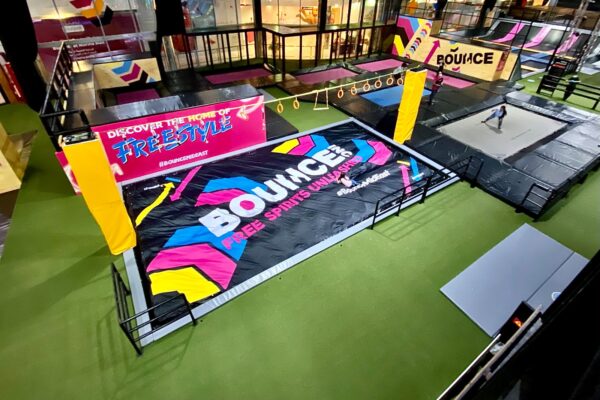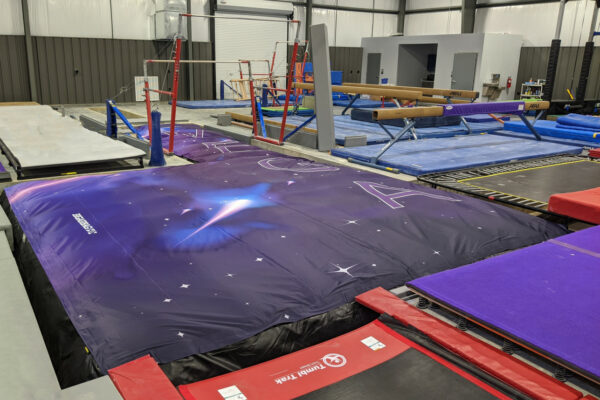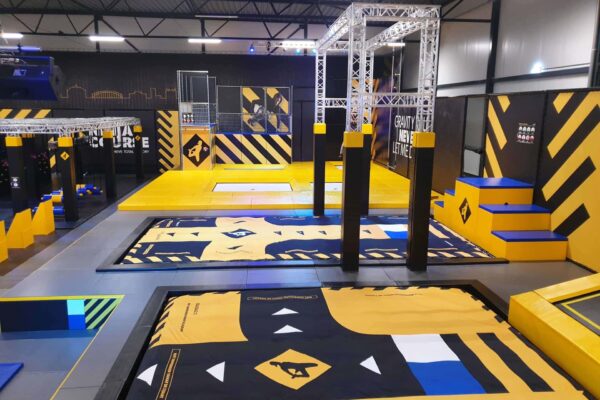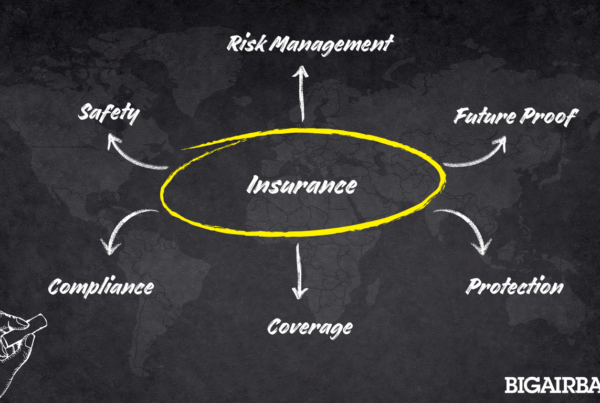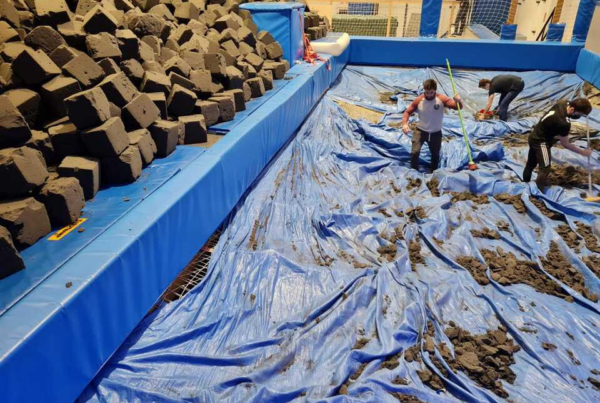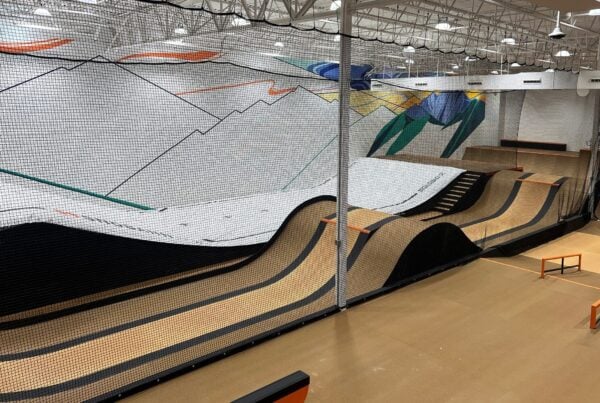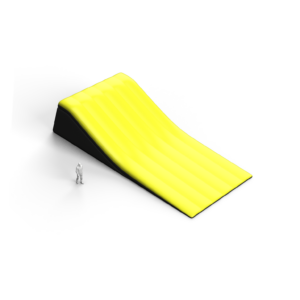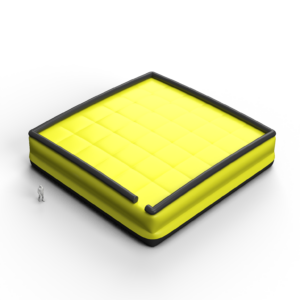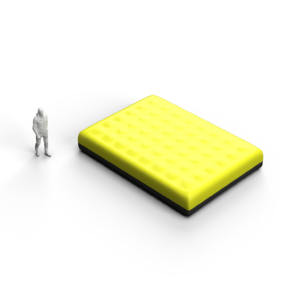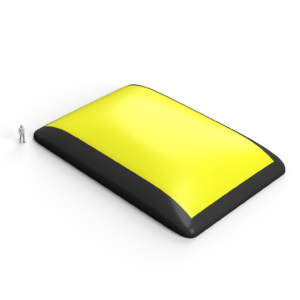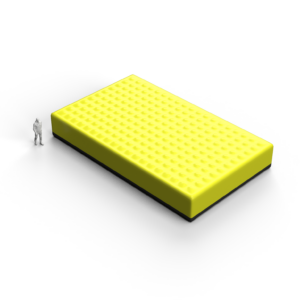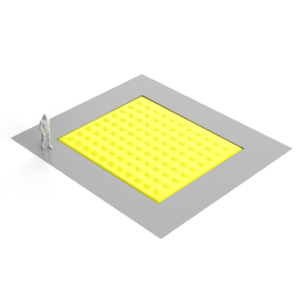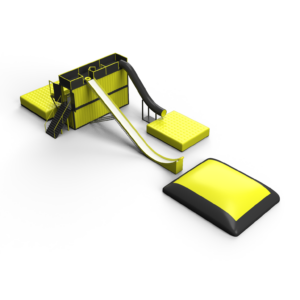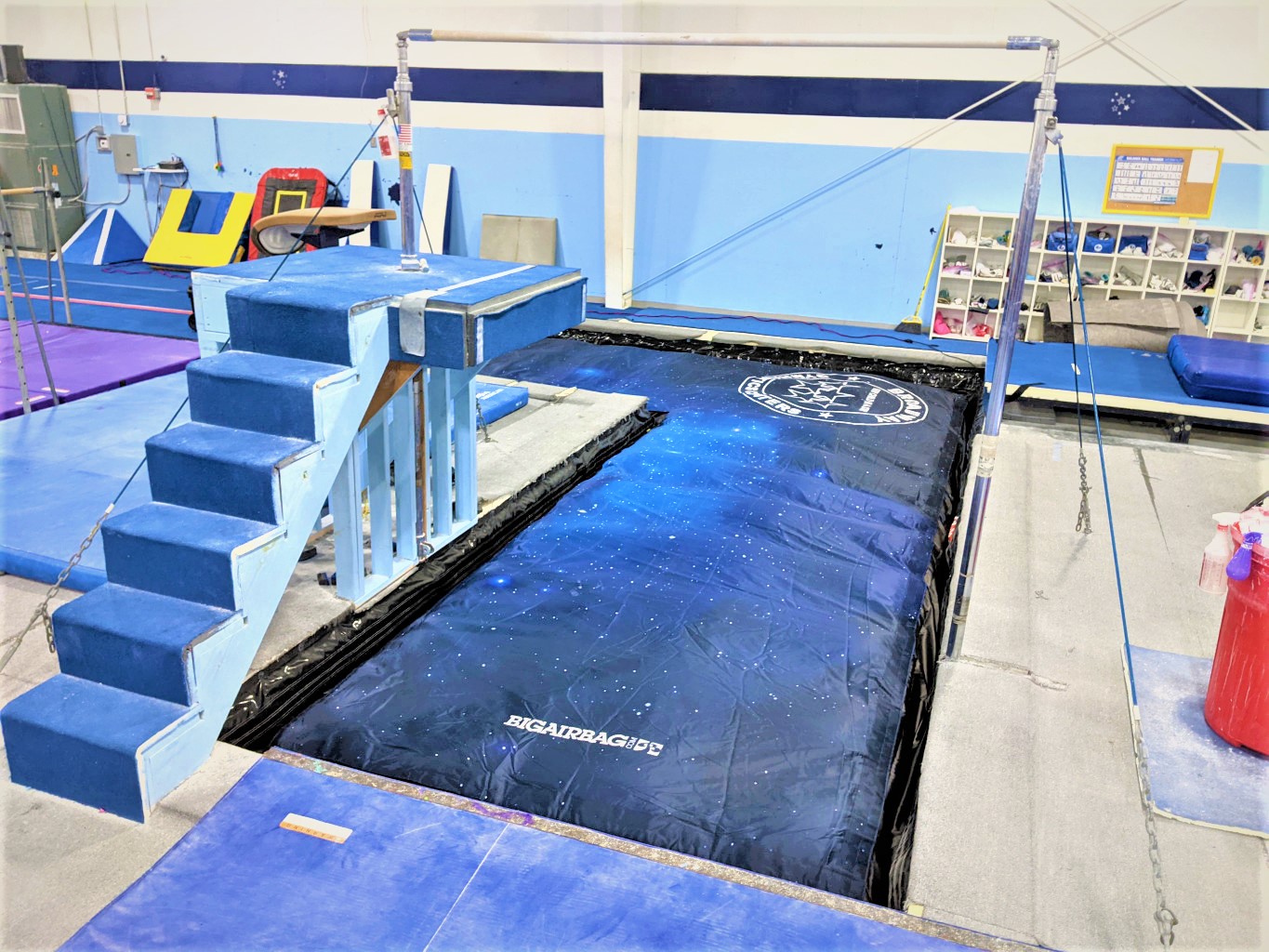
BigAirBag is an industry leader in manufacturing fall-safe Airbags to help Trampoline parks and Gymnastics clubs provide a safer environment. Our mission is to offer a product that reduces injuries and increases safety to ensure everyone can improve their skills without fear.
In our factory, we can monitor the process of manufacturing the Airbags and constantly improve the quality of the end product. Furthermore, we develop our products with the help of industry professionals that help us understand what users need and how we can give them the best fall-safe solutions on the market. Considering all the insights we have on both the Trampoline park and Gymnastics market, we managed to develop our products primarily focused on the safety of the users.
In this article, we present to you the critical opinion of industry specialists who spoke to BigAirBag about the safety challenges and the future of the Trampoline park market and the never-ending debate of “Foam Pits vs Airbags”.
Aleksandra Pałczyńska – International Safety Trainer and Consultant

Aleksandra Pałczyńska is an International Safety Trainer and Consultant with many years of experience in the industry. She has advised many parks on how to make their facilities as safe as possible and therefore, we asked her to provide us with her expertise.
1. What are the current challenges around safety in the trampoline park industry?
Importance of customer safety
“Safety in the trampoline park depends on the quality of the attractions, maintenance, and, most importantly and the most difficult to keep up customer safety service. The team needs to be aware of which customer’s activities lead to injuries and be assertive enough to communicate it to the guest in a way that a kid, teenager, or parent double bouncing with their child would understand.
When you hire young team members, it is very beneficial for the business to train them properly from day one. This way the park will avoid unwanted habits that they might learn from other team members or simply due to lack of full information about what their job is about.
The hardest part is keeping the bar high. Reinforcement Training is a common practice in the best and safest parks in the world. Combine it with a fun experience (maybe a quiz with a price?) and you will get a great team-building event for your staff. Some parks, based on the biggest theme parks experience, have developed Incentive Programs to give team members the opportunity to shine, be noticed, and be rewarded for excellent customer service (one of the biggest demotivating factors for team members is not being seen as individual but part of the staff – they feel they do not matter). The excellent customer service might be a turning point for visitors to choose this particular Family Entertainment Center for their future visits and events.”
“Accidents are just bad luck”
“It is hard to convince some owners who focus on the financial part of the business that they can eliminate many injuries by prevention (clear rules, reasonable maximum capacity, jumpers’ knowledge about the rules, assertive staff monitoring courts like a lifeguard at the swimming pool, risk assessment in practice). Some of them need to learn it the hard way by managing a media crisis when a serious injury happens. The injury could have been avoided. Nothing hurts the business more than the media shouting about another serious injury in the park, showing its unprofessional shortcomings in business management. Some parks have not survived such a crisis and have not been able to get their ROI back.
On the other hand, it is hard to disagree that some accidents are really just bad luck and can happen to anyone, like tipping over on a straight path. If the park injury rate is less than 0,009% you are doing it correctly.”
To let flips, or not to let, that is the question…
“…and there is no one answer to that. Each park needs to find its own sweet spot. There is no way to forbid all kinds of flips in the park because kids will stop coming to such a boring place. On the other hand, it is worth considering limiting the area where and what kind of tricks can be performed in the park. For example, do not allow double flips in the park or only allow them to be performed at the professional trampolines under the supervision of a Court Monitor/Instructor who can determine if you have the appropriate skills to perform tricks.
There is no one way of running this business. Trampoline parks are mainly created as entertainment centers. Some owners want to combine entertainment with sports activities by offering professional gymnastics classes, and also they start each jumping session with a warm-up to make sure guests know the basic moves on trampolines.
Regardless of which option you choose, your team members need to be able to recognize guests’ abilities to do the maneuvers they want to perform. They do not have to be gymnasts to be able to notice if a person is confident in their moves and, for example, lands correctly on two feet. However, team members who do not have professional skills as the gymnast are not allowed to advise guests. It is better to ask the jumper performing awkward moves not to continue with their activities. The trampoline park is not a place for visitors to learn new skills on their own, without a professional instructor. If you have such classes, you can always suggest them to the guest.”
2. Foam Pit or Airbag?
“As a safety trainer and consultant in the trampoline park business, I am writing an article for one of the best Airbag companies to give my opinion on what is better.
I will be honest and give my opinion as a jumper, the team member who cleaned the foam pit herself, the owner of the park, and the host running corporate team building in parks.
Let’s start with safety – it is true that statistics around the world show that fewer serious injuries happen at the airbag than in the foam pit. And just to remind you, some of the injuries in the foam pit are fatal. On the other hand, in the parks that decided to change the foam pit with Airbags, I observe an increasing rate of less serious injuries like sprain or twisted ankles. What is the reason? Jumpers are breaking the rule and land on their feet instead of their bottom or back.
As a team member – I would prefer the Airbag and you will hear it from 99,9% of team members all over the world. Cleaning the foam pit is one of the hardest jobs I have ever done in my life and I respect staff members who do it every few weeks (or at least that is what they are supposed to do according to manufacturers).
As a jumper – I like both. It depends on the age of the customer. Younger users love to spend time in the foam pit. It is just fun to get out of a huge pit filled with foam cubes. Lucky them! They do not get stuck in there. Also playing, and trying to get out from the pit filled with foam cubes supports their development and improvement of motor skills.
As a corporate team building host – I like having foam pits in the park because I can create more challenges with the foam cubes, such as building the highest cubes tower.
As the owner – I would choose Airbags for most attractions. It is safer, easier, and cheaper to maintain. Also, you can take off the cover and simply wash it instead of taking off all of the foam cubes, vacuuming the trampoline which is at the bottom, sanitizing the foam cubes, throwing away used ones, and placing other cubes back plus adding new ones to keep the proper level of the foam cubes in the pit by a team of at least 3 people. Additionally, I would have a foam pit in a separate kids’ area or in the smallest pit in the park. This way, the youngest can have fun and my team-building hosts can use the foam cubes for creative challenges for private events.”
3. Future of the trampoline park industry in regard to safety
“I also observe an increase in the popularity of the attractions requiring professional skills among average users of the trampoline park. For example, a combination of a professional trampoline with an Airbag is risky for the average jumper. Therefore, I would consider this section to be supervised by a competent employee who determines who can do the flip on the Airbag and who can just land on their bottom. I would not be so strict if I had not seen an accident where the jumper, after doing a flip on the professional trampoline, landed with his back on the padding. Calculated fun risk first. We need to distinguish and understand that something that is safe and fun for one person can be scary for another. Fear, like fatigue, may cause the jumper to lose control over his body and lead to injury.
There are two perspectives on who is responsible for the risks of participating in trampoline park activities. In the United States, the guests are in charge of their own safety. That is why they sign the waiver before entering the trampoline park. Otherwise in Europe, where the waiver does not apply as people don’t bear the responsibility for the risk they have no knowledge of.
In both cases, it is beneficial to raise safety awareness among the jumpers and their parents. Some parks, in addition to the waivers, safety signs, and safety videos, use social media channels to communicate the safety rules in a funny and more entertaining way. There is no limit to a creative approach in making sure that guests understand the most important rules and are simply aware of their body motions on trampolines. I believe that parks will use these channels to create funny content for edutainment that may even go viral among the most popular age group park visitors.”
Luke Shaheen – Managing Partner at APEX Active Entertainment Group

Luke Shaheen is an industry specialist with broad experience in managing Trampoline parks. Considering he is a person who deals with the challenges of the Trampoline parks industry on a daily basis, BigAirBag contacted him to collect his valuable opinion on the safety and the future of Trampoline parks.
1. What are the current challenges around safety in the trampoline park industry?
- “Congestion and dealing with the volume of people after covid who are looking for activities and how operators deal with the crowds.
- Manage capacity, keeping distance, although restrictions are lifting you want to make sure people are safe and having fun. If the parents are sitting and watching their kids jump around you do not want them to be sitting on the edge of their seats.
- A chaotic environment where attractions are over capacity can lead to issues with injuries, and controlling the environment can eliminate some of these risks.
- One of the benefits of the Airbag is that we keep a flight attendant by the bag at all times who manages the traffic. This is very quick and efficient with an easy exit out of the bag.”
2. What safety tips should you really know as a park operator?
- “Knowing how to deal with a situation when it comes up. It’s a fun industry and people tend to push their limits and try things out of their ability. It’s imperative that park operators prepare themselves for all the possible scenarios to ensure when something does happen they know how to handle this.
- Providing the necessary training and first aid training to all staff is vitally important. A standard operating procedure for how to handle injuries in the section of the park is also important.
- Maintain injury response procedures.”
3. How do you see the future of the trampoline park industry in regard to safety?
- “More and more standards are being developed and not only developed but actually being applied. Restrictions and regulations are increasing and the whole industry is tightening up. What is also interesting is that we are starting to see parents care more and more about safety.
- Coming out of covid, parents are going to be more and more concerned about the cleanliness of facilities. Although covid is behind us, we are coming into a new world.
- There’s an old saying here called the moment of truth! When a parent walks into a park and sees a piece of gum on the floor and immediately thinks that the kitchen must be dirty as well. So from A – Z, it’s critical that your facility must be clean and in top shape at all times.”
If you find this information helpful and have any further questions regarding the topics in this article, please do not hesitate to get in touch with us.
